Post Conference Review #4: Rideau Canal Tour
03 June 2013 – Marty Wilson
preservation, conference, The Public Historian, NCPH conference 2013, conference city review, Parks Canada
Editor’s note: This post continues the series of conference city reviews published by The Public Historian in the Public History Commons
Rideau Canal Tour, April 20, 2013,. NCPH Annual Meeting, Ottawa, Ontario, Canada. Creators: Parks Canada. Tour leaders: JUAN SANCHEZ and BILL WYLIE.
It was unseasonably cold and snowing lightly on Saturday morning when we boarded a bus to tour the Rideau Canal. On the bus we met our tour guides: Juan Sanchez, the Rideau Canal Visitor Services Manager, Parks Canada, and Bill Wylie, who recently retired from Parks Canada. Juan and Bill wanted to introduce us to the history of the canal, why it earned both National Historic and World Heritage Site status, and how Parks Canada is preserving it.
Our first stop was less than a mile from the conference hotel at the Ottawa Locks, which were built in the shadow of the Canadian Parliament. We walked to the Lockmaster’s Office next to the locks where Juan and Bill gave us some background on the canal. It was built between 1826 and 1832 by the British military to ensure a supply line to western Canada if the United States invaded again and took control of the St. Lawrence River. There was already an intricate web of lakes and rivers between the Ottawa River and Lake Ontario; they needed to be connected into a seamless water route. The resulting system stretches 202 kilometers (126 miles) from Ottawa to Kingston and employs forty-seven locks. It has been in continual use since its completion in 1832, although today it is used by pleasure boats.
The canal’s builder was Lt. Colonel John By of the British Royal Engineers. Given a budget of £56,000, which eventually ballooned to £829,000, By laid out the canal and oversaw its construction. Bill told us that the section nearest the river was constructed by a contractor who hired local French-Canadian laborers from across the Ottawa River—men experienced in the local timber industry. Other contractors, however, brought Irish immigrants to the area in order to save labor costs. Without adequate housing or clothing, the Irish suffered terribly from the cold in winter and from malaria when warmer weather brought out the area’s mosquitoes. A Celtic cross near the locks commemorates their hardships. In addition to the French Canadians and the Irish there were Scottish stonemasons and English sappers and miners. It was a volatile ethnic mix that often exploded into violence, especially when alcohol was involved. The local settlement was so rough that when it sought incorporation in 1855, residents changed its name from Bytown to Ottawa in an attempt to leave its reputation behind.
Next to the locks is the Bytown Museum, the oldest stone building in Ottawa, which is housed in the former Commissariat Building. Getting out of the cold we explored the museum’s three floors. The museum is run by the Historical Society of Ottawa and effectively uses film, animation, and artifacts to tell the story of Bytown.
We then got back on the bus for an hour-long ride to Merrickville. For much of the way the bus travelled along the canal while Juan provided commentary. Part of the canal in the north was cut out of an impenetrable swamp (hence mosquitoes) so the land had to be drained and channels blasted out of limestone using black powder. In the south, however, workers found granite that proved impervious to black powder. As a result, in the north they cut the canal and in the south they raised the water level. Some seventy-four dams allow canal operators to regulate water levels.
Merrickville was already important as a crossroads and industrial center. Its population boomed when the canal was vital, but returned to its pre-canal population after the canal’s utility was undermined by railroads and highways. After a stop for lunch we visited the blockhouse, the largest of four built to protect the canal and a reminder of its military purpose. A volunteer from the Merrickville and District Historical Society opened the building and gave an interesting talk on how the blockhouse was constructed. The blockhouse serves as the society’s museum, so it is filled with memorabilia from the area, including items that had been manufactured in the iron forge whose ruins we could see on the other side of the canal. (A tour of the ruins was scheduled, but we abandoned it because of the wind and cold.) Juan gave us a tour of the locks next to the blockhouse and explained how they operate. Since the canal had not yet opened for the season, water flowing through it had been reduced to a trickle. As a result, we were able to see sluices in the gates and walls that are otherwise hidden from view.
From Merrickville we drove for twenty minutes to the Parks Canada gate shop in Smiths Falls where replacement lock gates are constructed. A Parks Canada gate builder explained how gates are constructed and installed. Made of Douglas Fir, gates last approximately fifteen years. Every year the shop builds and oversees the installation of three sets of gates. Before the shop opened in the 1970s, gate building was parceled out to local contractors who employed large crews of workers to build gates on site. That system sometimes resulted in gates of inconsistent quality. Once, early in the twentieth century, a gate failed catastrophically resulting in the deaths of two people. The gate shop allows for more precise and efficient gate building.
The hour-long trip back to the hotel gave us time to reflect on the tour. Seeing the locks and canal up close, and driving across the limestone plain the canal had to traverse—all the while knowing that the canal is still in operation—speaks to Parks Canada’s commitment to preserving this engineering wonder. The gate shop, in spite of belt tightening that allows only three full-time workers, is further evidence of that commitment. Juan and Bill expertly provided the narrative needed to understand the system’s significance. It is little wonder that in 1925 Canada gave it National Historic Site status, and in 2007 it was recognized by UNESCO as a World Heritage Site. Bill’s insights on the lives of the canal’s builders provided a human element to the story. The visits to the Bytown Museum and the blockhouse supplemented our understanding of the canal’s impact on the area it traversed. The tour met its organizers’ goals. It would have been nice, however, to hear more about the different periods of the canal’s history. What was the impact on local commerce provided by the canal after its military importance waned? Who operated the canal and the canal boats? What were their lives like? How, I wondered as a resident of eastern Pennsylvania where the ruins of canals are common, did the canal survive after its commercial importance ended? A successful tour elicits questions, however. The Rideau Canal tour was an excellent addition to this year’s annual meeting.
~ Martin Wilson, East Stroudsburg University





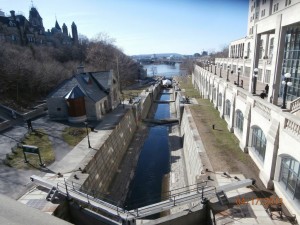
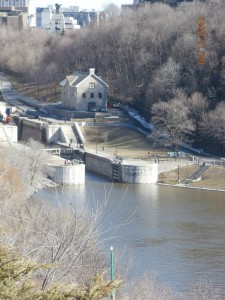
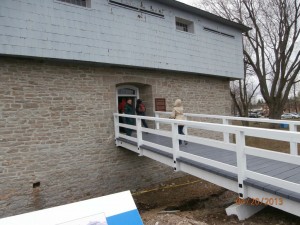
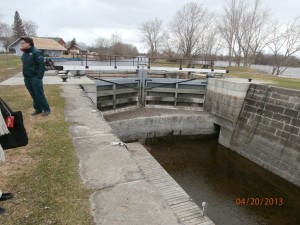
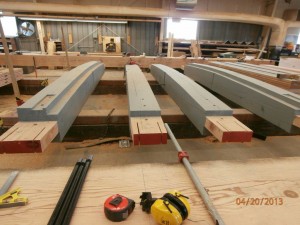
It was an epic struggle for survival.